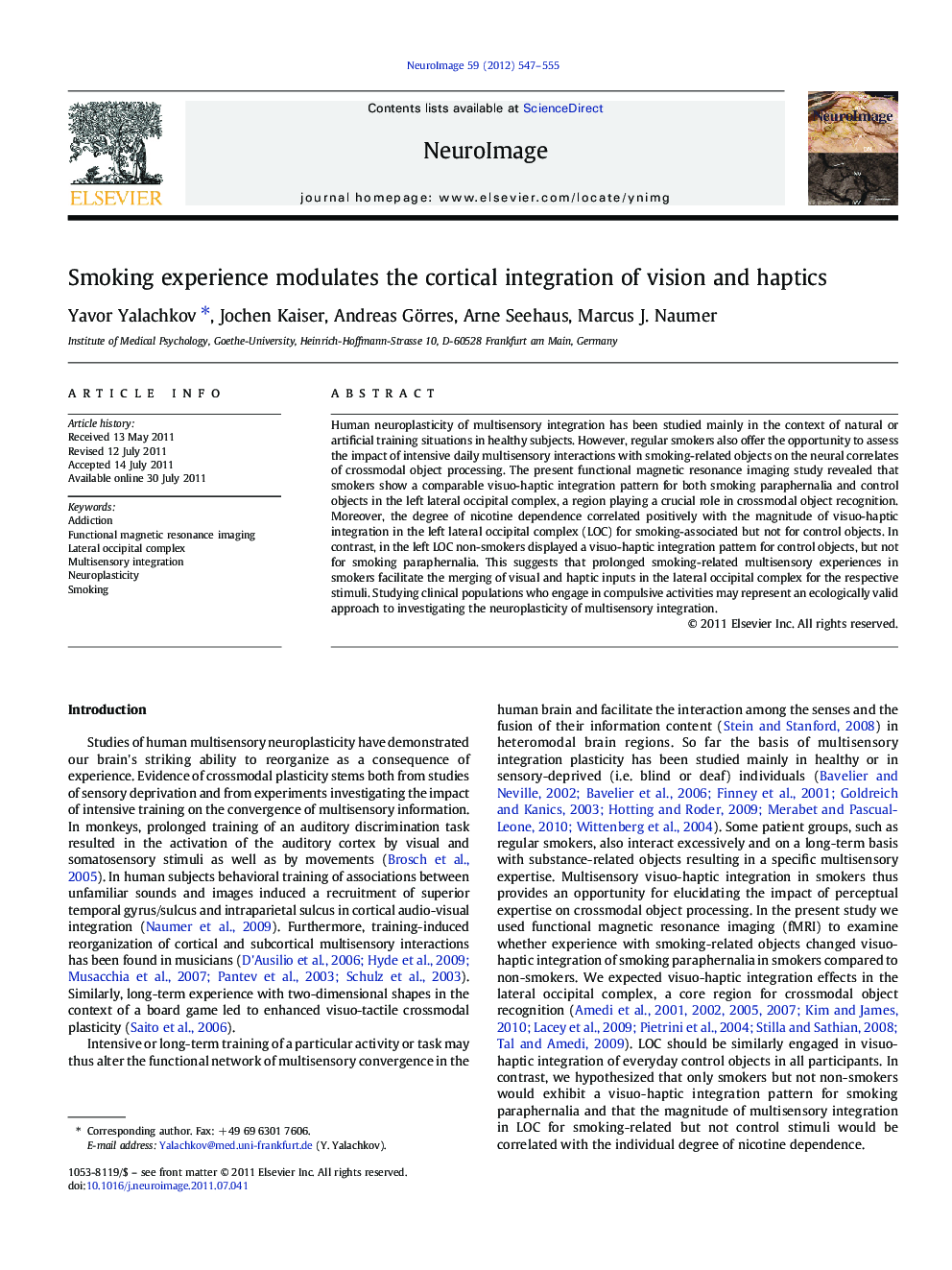| Article ID | Journal | Published Year | Pages | File Type |
|---|---|---|---|---|
| 6033117 | NeuroImage | 2012 | 9 Pages |
Human neuroplasticity of multisensory integration has been studied mainly in the context of natural or artificial training situations in healthy subjects. However, regular smokers also offer the opportunity to assess the impact of intensive daily multisensory interactions with smoking-related objects on the neural correlates of crossmodal object processing. The present functional magnetic resonance imaging study revealed that smokers show a comparable visuo-haptic integration pattern for both smoking paraphernalia and control objects in the left lateral occipital complex, a region playing a crucial role in crossmodal object recognition. Moreover, the degree of nicotine dependence correlated positively with the magnitude of visuo-haptic integration in the left lateral occipital complex (LOC) for smoking-associated but not for control objects. In contrast, in the left LOC non-smokers displayed a visuo-haptic integration pattern for control objects, but not for smoking paraphernalia. This suggests that prolonged smoking-related multisensory experiences in smokers facilitate the merging of visual and haptic inputs in the lateral occipital complex for the respective stimuli. Studying clinical populations who engage in compulsive activities may represent an ecologically valid approach to investigating the neuroplasticity of multisensory integration.
⺠Neuroplasticity of visuo-haptic integration was studied in smokers and non-smokers. ⺠Both groups integrated control objects in the left lateral occipital complex (LOC). ⺠Only smokers integrated smoking paraphernalia in the left LOC. ⺠Severity of dependence was correlated with the integration of smoking objects. ⺠Multisensory smoking experience facilitates the respective integration in the LOC.
